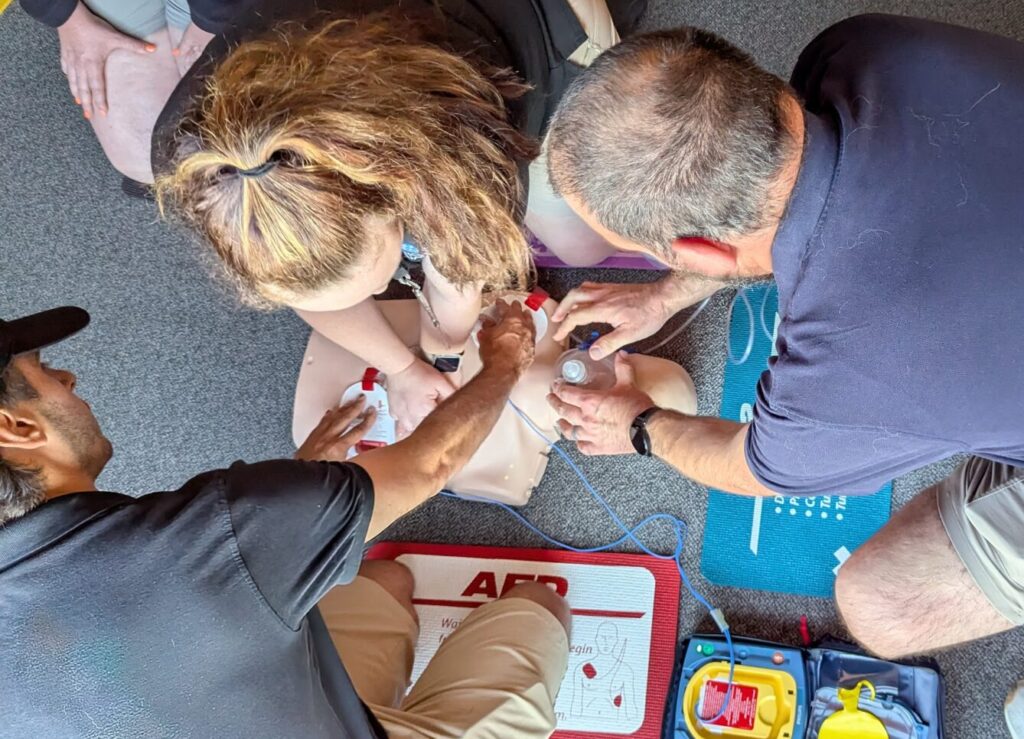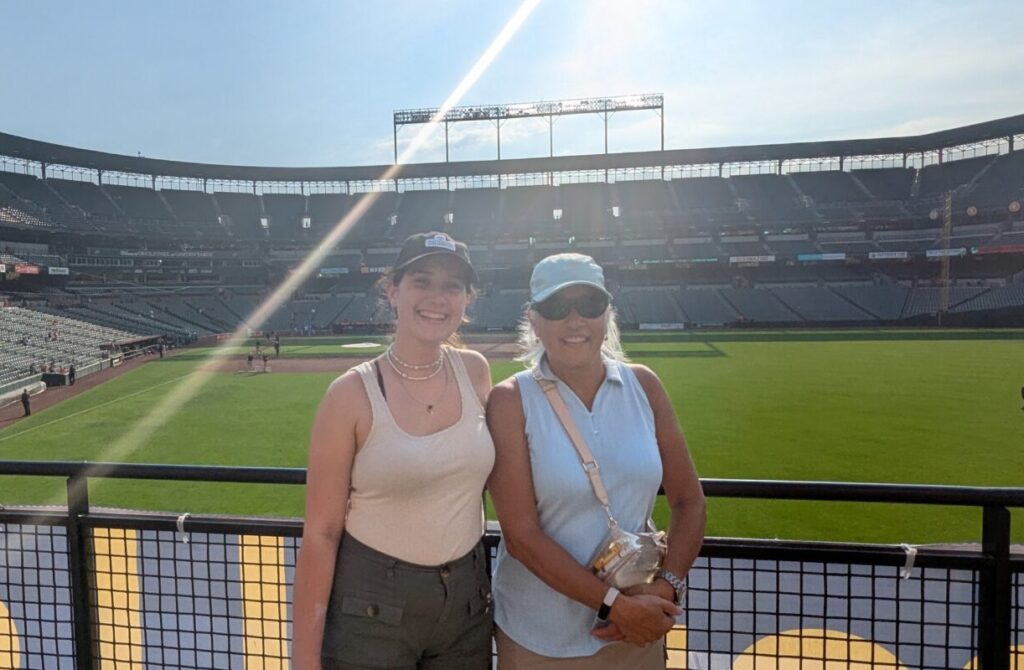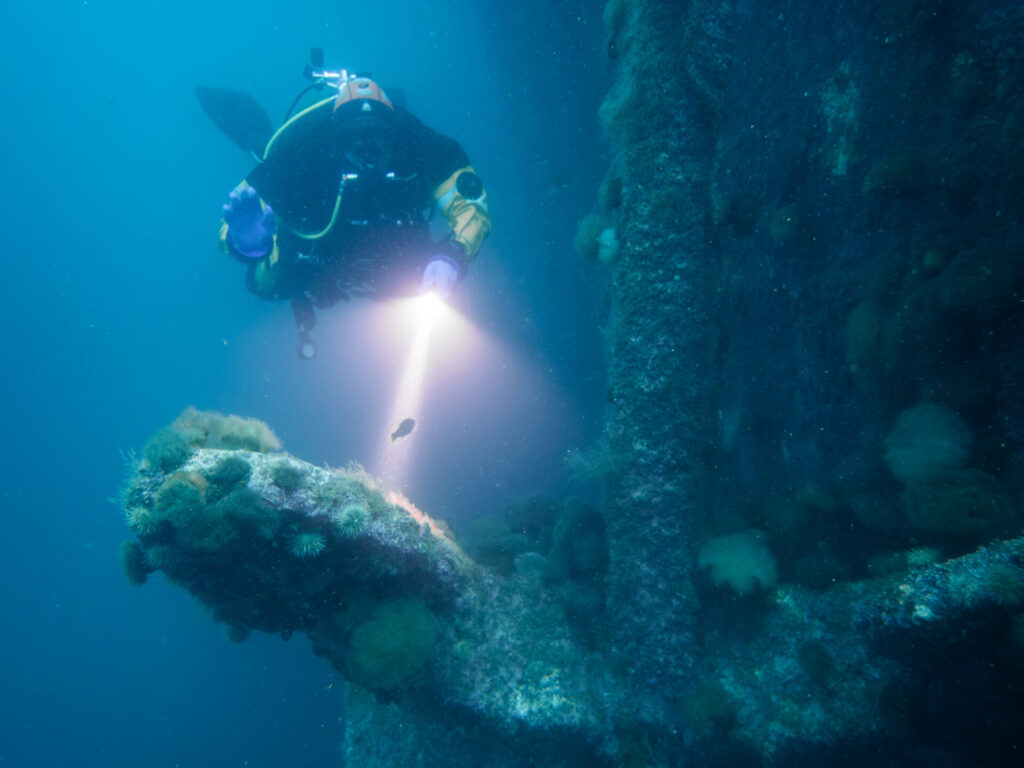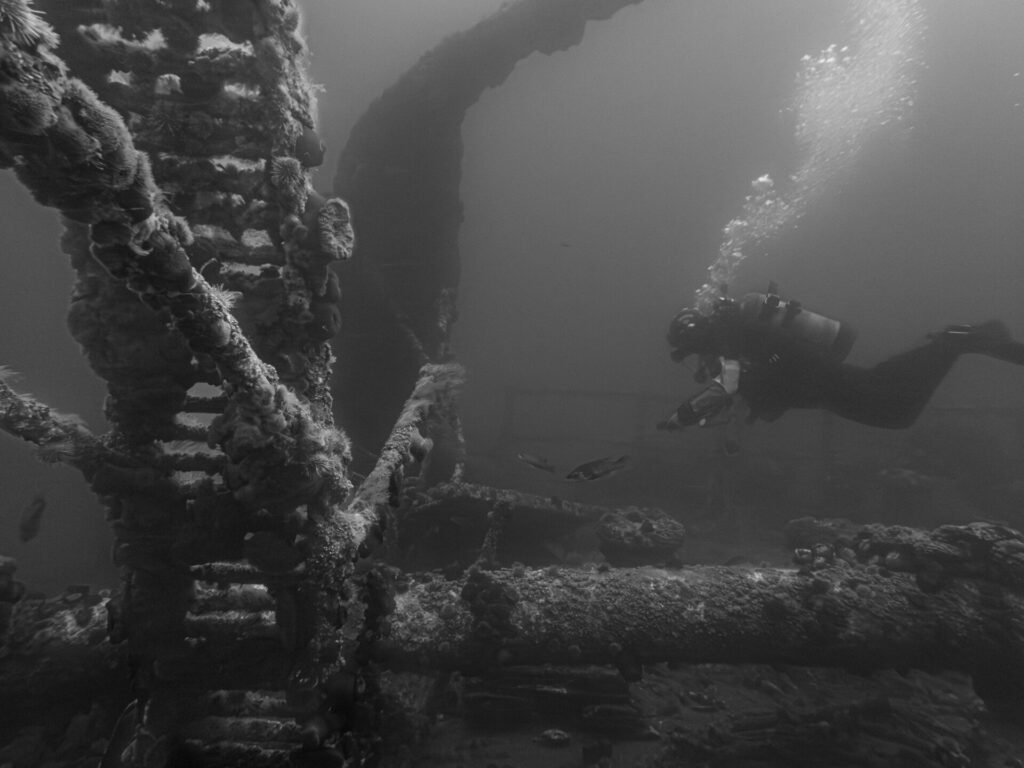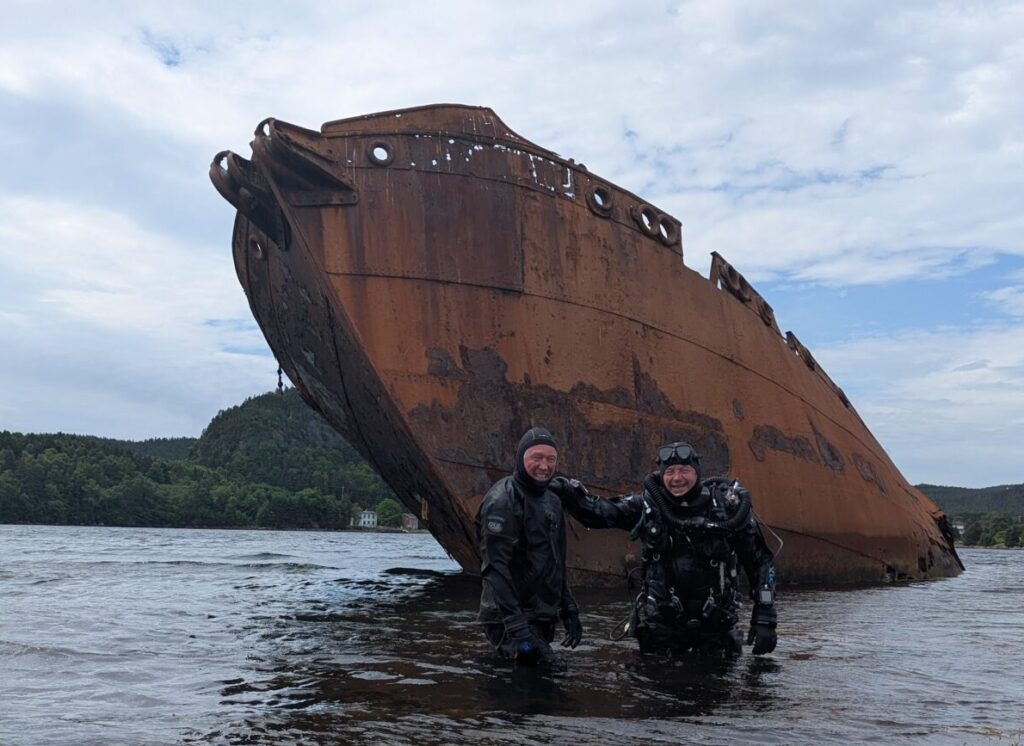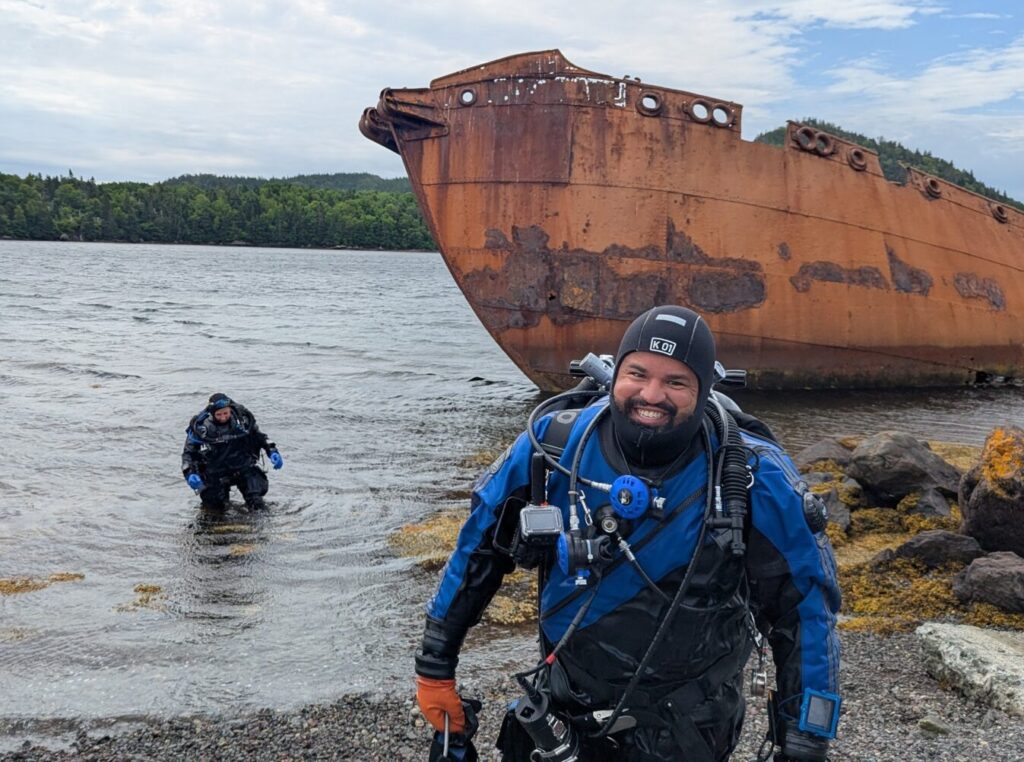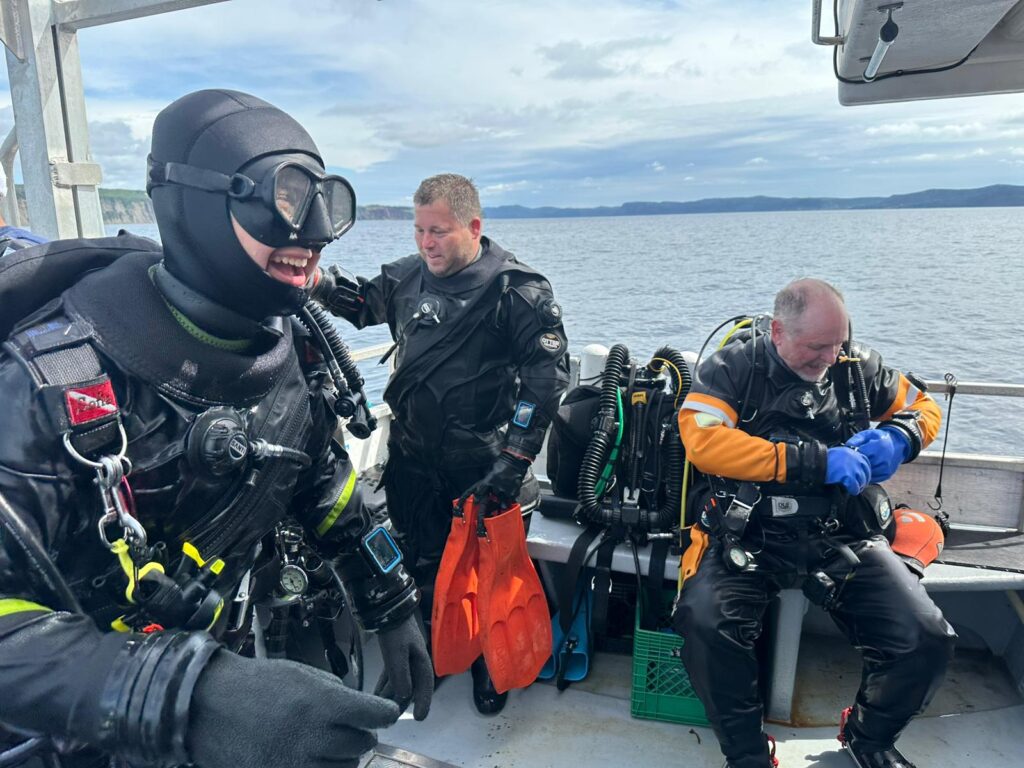Over the night we had sailed down to a bay called Midterhukhamna, south of Longyearbyen, and were gearing up for our first full day on the Ortelius. We spent the morning in our diving orientation, and once we had all been shown the helicarrier where we were to store our dive gear, it was time to get ready for our check-out dive!
Unusually, our expedition had far more divers than most BlueGreen trips do: out of about 80 passengers, around 90% of us were divers. Almost all the rest were snorkelers, so there were a lot of people who wanted to get in the Arctic waters!The checkout dive was basically a test run, so that we and the dive staff could understand the process of getting such a large group geared up and in the water. We were broken into two rounds of divers, with five dive boats of 4-6 people in each round. A sixth boat carried the snorkelers on the first round. I was in the second round, so I had a bit more time to get ready. The other Round Two divers and I would get into our undergarments and drysuit in the helicarrier while the first round were out diving, and then when they returned and finished unloading the zodiac boats on deck 5, we would load our kits on.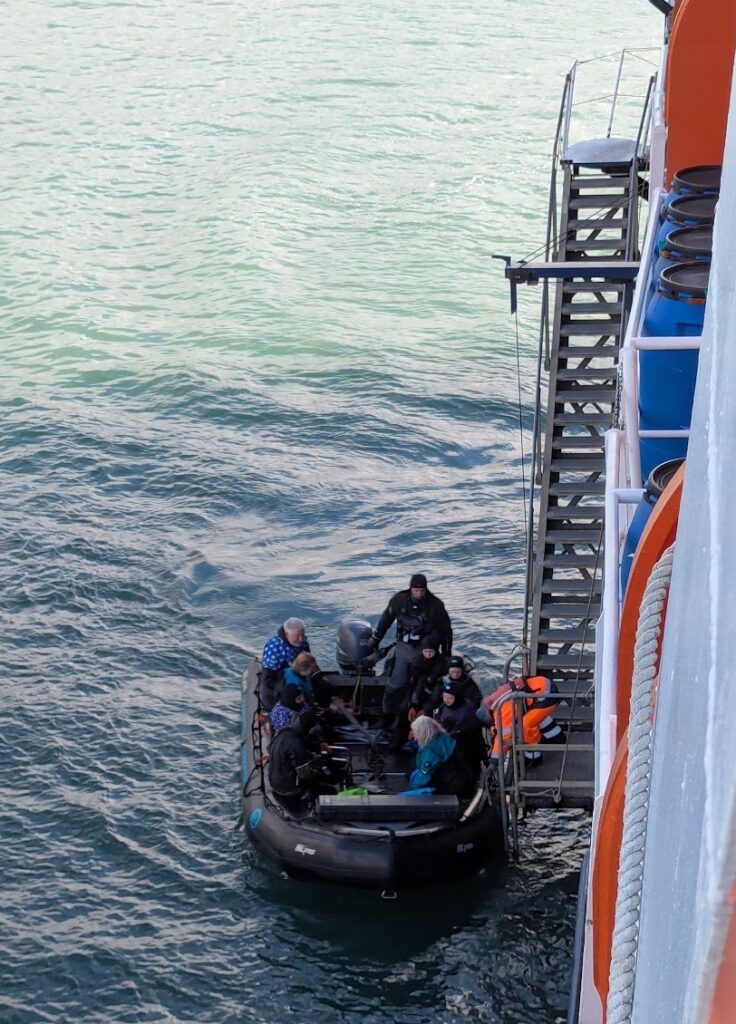 Then, we would head down to the gangway area on deck 4 and finish putting our hoods and gloves on as the expedition crew lowered the zodiacs down to the water. Boat by boat, we would be called to walk down the gangway to our zodiac. Our boat’s dive guide, Henrik, brought us out to the chosen dive site, and we donned our kits and put on our fins and mask. Once we were all lined up on the edges of the zodiac, Henrik counted to three and we backrolled into the water. The cold stung my face, but with my hood and gloves and so many underlayers, I wasn’t nearly as cold as I thought I would be!
Then, we would head down to the gangway area on deck 4 and finish putting our hoods and gloves on as the expedition crew lowered the zodiacs down to the water. Boat by boat, we would be called to walk down the gangway to our zodiac. Our boat’s dive guide, Henrik, brought us out to the chosen dive site, and we donned our kits and put on our fins and mask. Once we were all lined up on the edges of the zodiac, Henrik counted to three and we backrolled into the water. The cold stung my face, but with my hood and gloves and so many underlayers, I wasn’t nearly as cold as I thought I would be!
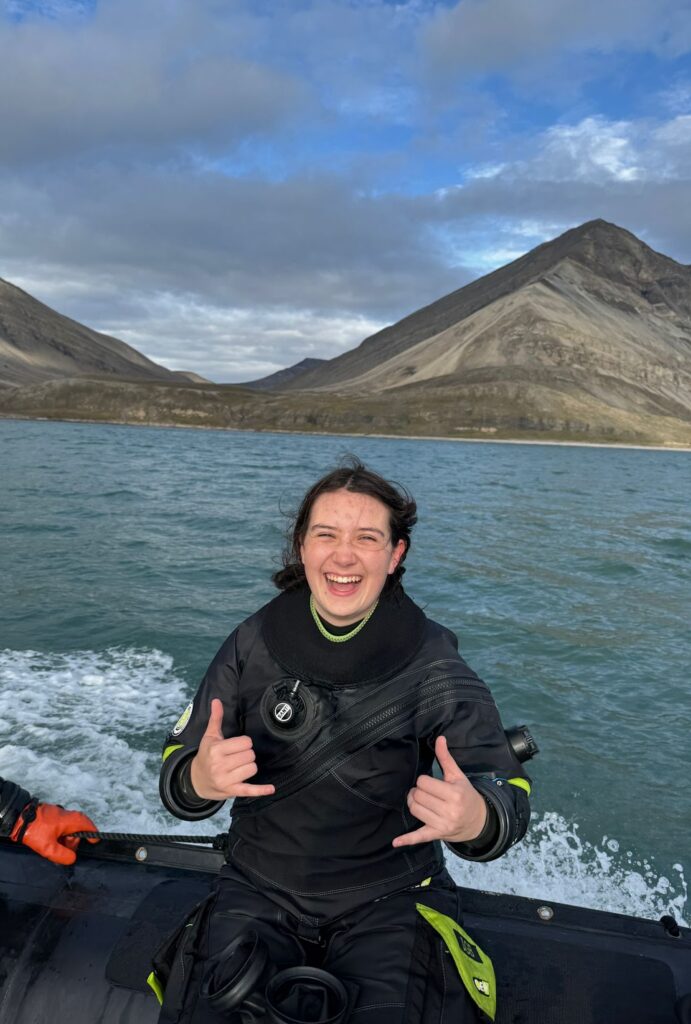 The goal of the check-out dive was just to make sure all our gear worked and that we were weighted correctly, so we only stayed down for a few minutes. The visibility was really cloudy because of the nearby glacier in the bay, so my buddies and I held hands as we went down to make sure we didn’t lose each other. Once we reached the bottom, we discovered long waving kelp fronds, but beyond that the visibility and our short dive time meant we didn’t see much. The dive was a success: nobody’s gear was busted, and we all were weighted properly for the buoyant layers we had on and extra salty polar water. And I got to dive in Arctic waters for the first time ever!
The goal of the check-out dive was just to make sure all our gear worked and that we were weighted correctly, so we only stayed down for a few minutes. The visibility was really cloudy because of the nearby glacier in the bay, so my buddies and I held hands as we went down to make sure we didn’t lose each other. Once we reached the bottom, we discovered long waving kelp fronds, but beyond that the visibility and our short dive time meant we didn’t see much. The dive was a success: nobody’s gear was busted, and we all were weighted properly for the buoyant layers we had on and extra salty polar water. And I got to dive in Arctic waters for the first time ever!
The next day, I joined two hikes on land. The first hike was on the island of Alkhornet, and the afternoon hike was on the shore of Sansbukta.
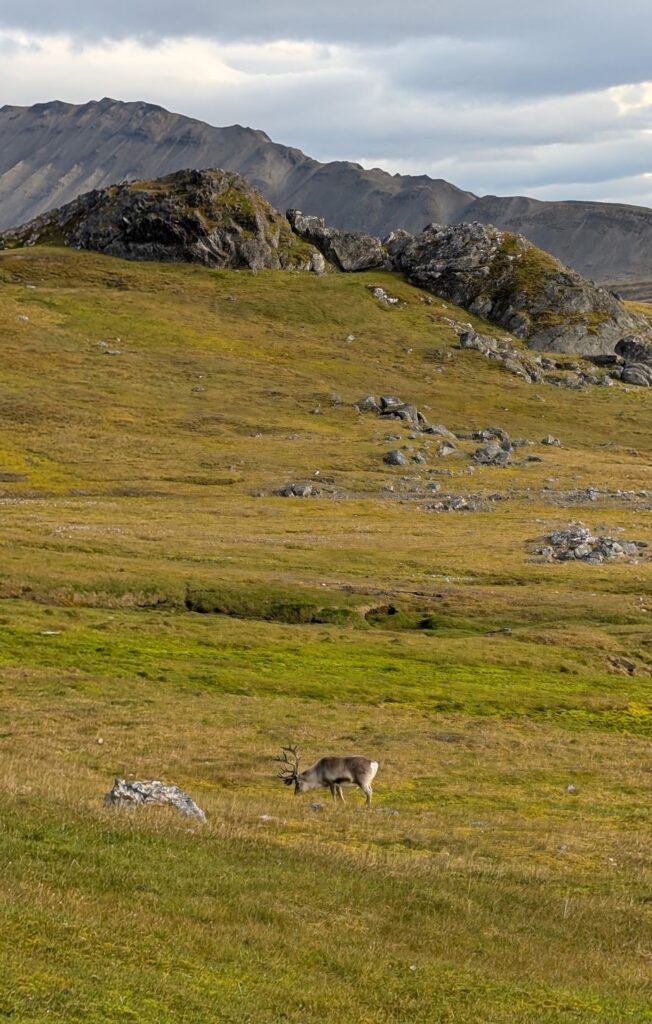
Alkhornet was a beautiful island, with spongy green ground covered in beautiful textures of moss. The island rose into a craggy rock peak, and even from so far away we could hear the cry of the Kittwake birds circling its peak. As we traversed the hills on the base of the island, we spotted several reindeer! They clearly weren’t worried about humans, and we were able to get fairly close as they grazed. One of the bucks had really impressive antlers, and we also saw several female reindeer with young foals! My favorite was watching the moms graze a ways away, and to see the baby realize the mom had moved and bound over to her. It was absolutely amazing.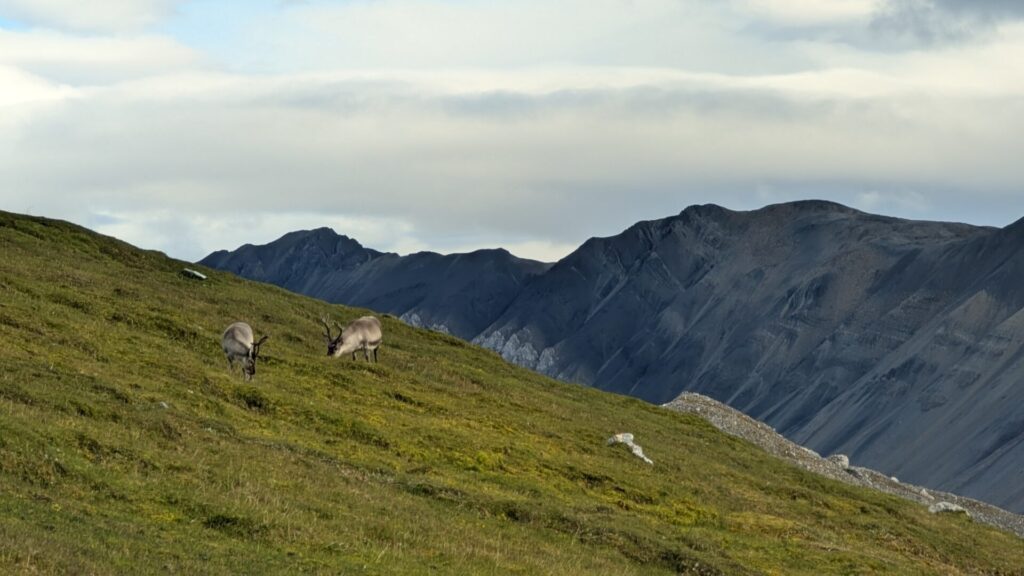
From our vantage point on the island, we could see all the way across the bay. The Ortelius looked so small in comparison! The boat had felt so large as I learned my way around, and to see it so small in the context of the wide bay and high mountains reminded me of how grand the Arctic really is.
That afternoon, we sailed over to the other side of the bay to the shores of Sansbukta, and the whole boat piled into zodiacs for the walk. In contrast to the green of Alkhornet, Sansbukta was a pebbled beach with hills of hardy alpine plants. There was a stranded wooden ship from the 1800s on the beach, and the expedition team told us that because no trees grow in Svalbard’s harsh climate, all their wood is sourced either from shipments or from driftwood. Back in the 1800s, when this small ship was built, most wood was from driftwood.
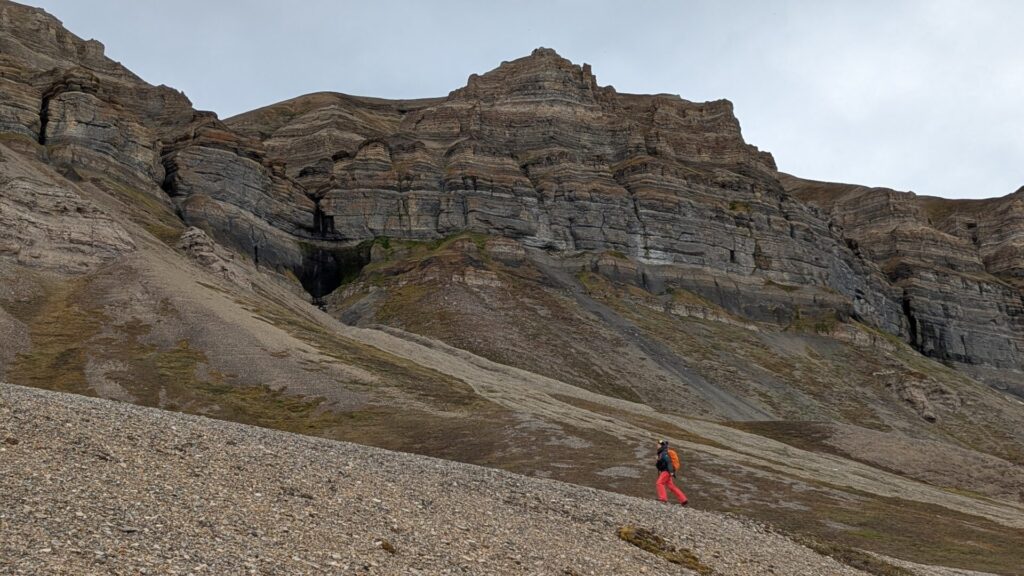
Past the boat, we climbed a small hill to a vantage point, once the expedition leaders had scouted ahead for polar bears. We could see the whole plain and where it met the beach, the striated layers of the rocky cliffs around us, and a faraway lone reindeer grazing. Georgie, one of the expedition team, suggested that to understand the true silence of the Arctic, we should all spend five minutes sitting and simply observing. We all found comfortable spots to sit, and just listened. At first, it just felt quiet, but soon I realized I could hear the small waves rolling up on the beach, and the birds squawking on the far side. The wind was howling from far away, whistling between the mountain ridges. It was incredibly serene. As I write this blog now, it’s amazing to think of that same spot in Svalbard, and how the waves are lapping at this very moment, and the same wind is making that distant roar. It feels so special that I was able to feel what that environment is like when there (almost) aren’t any people there.
– Sofia
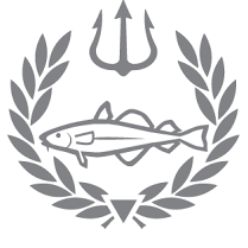
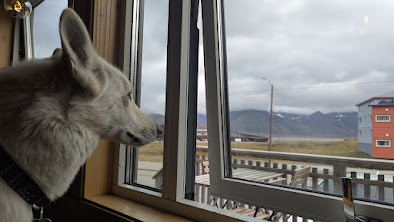
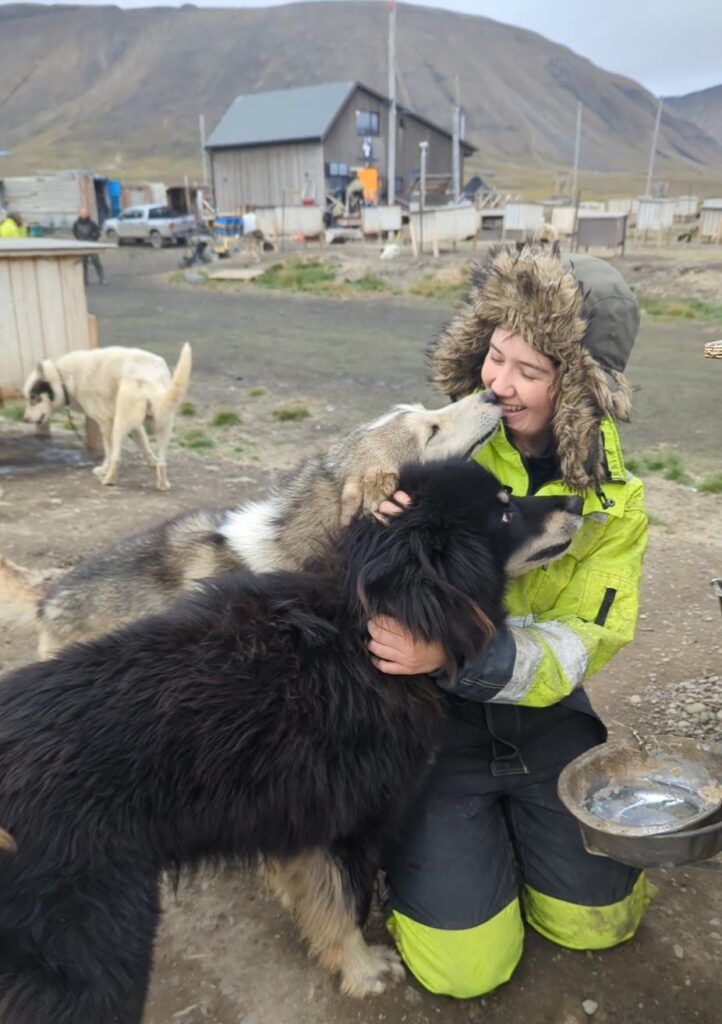
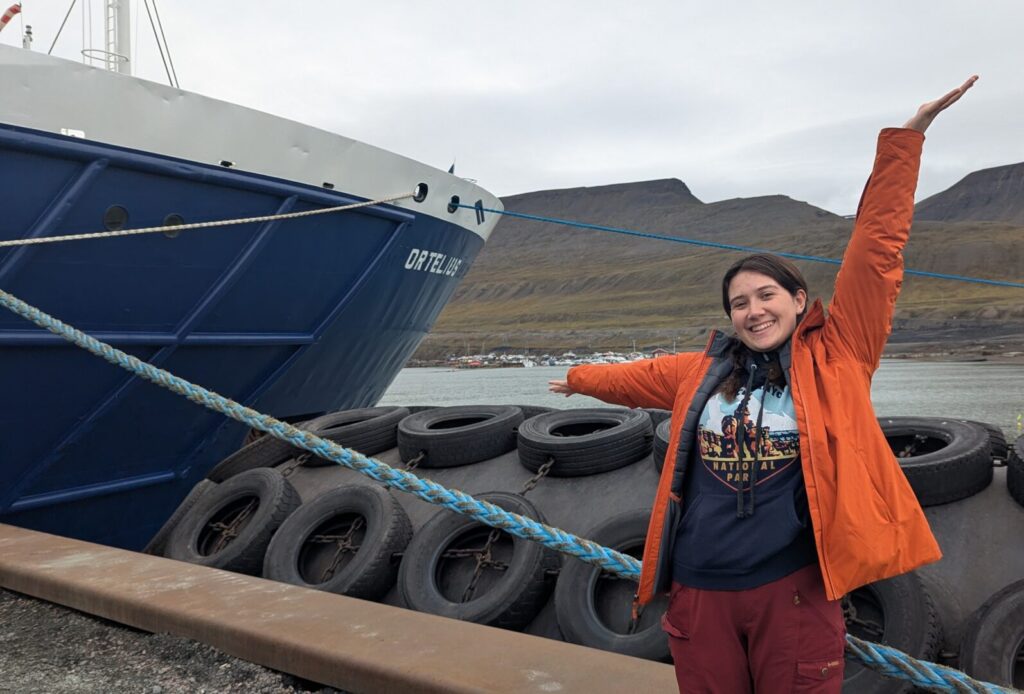

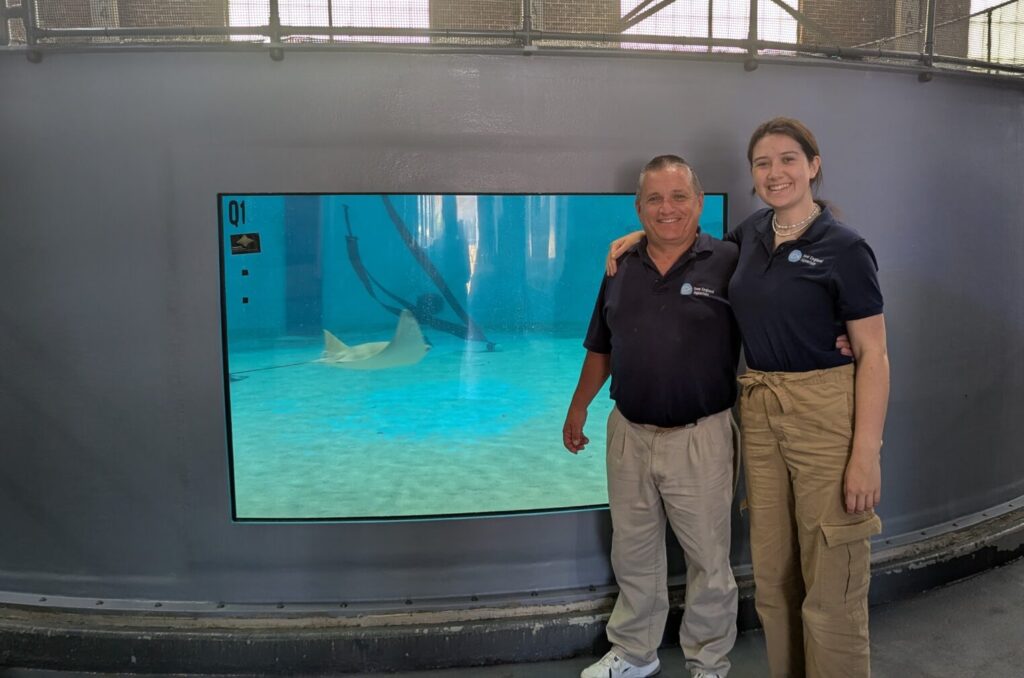
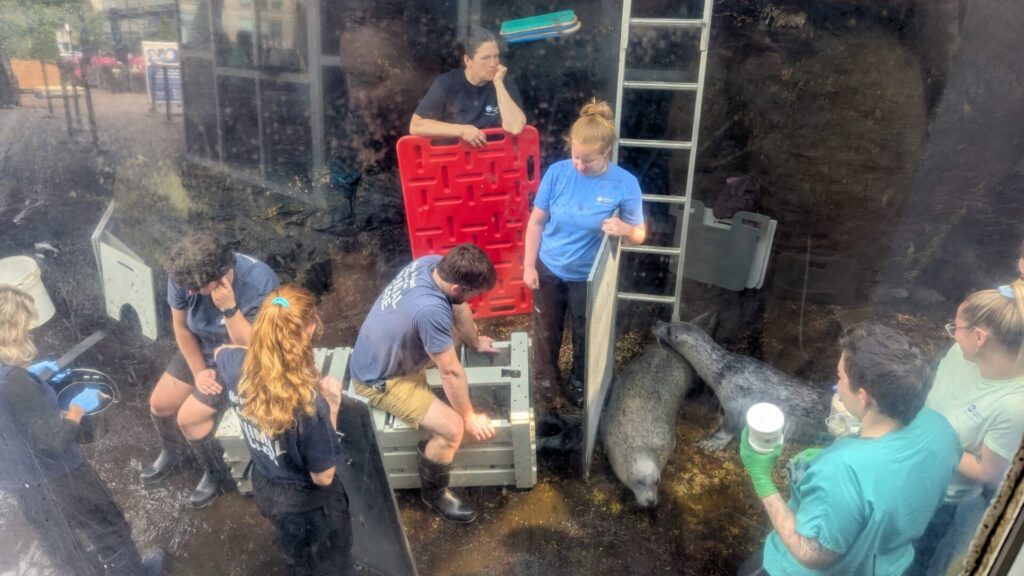
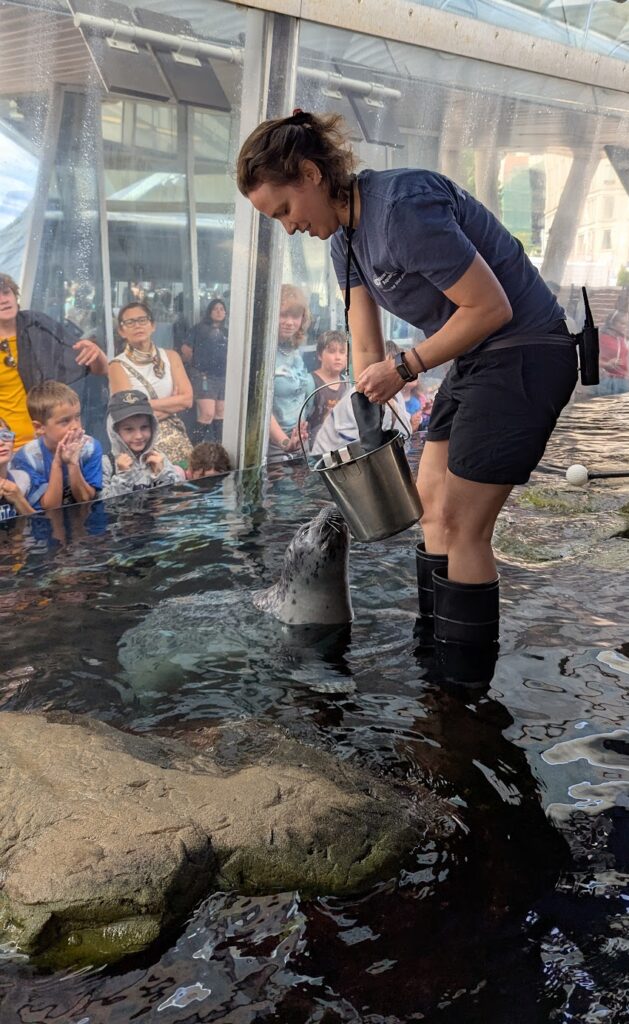
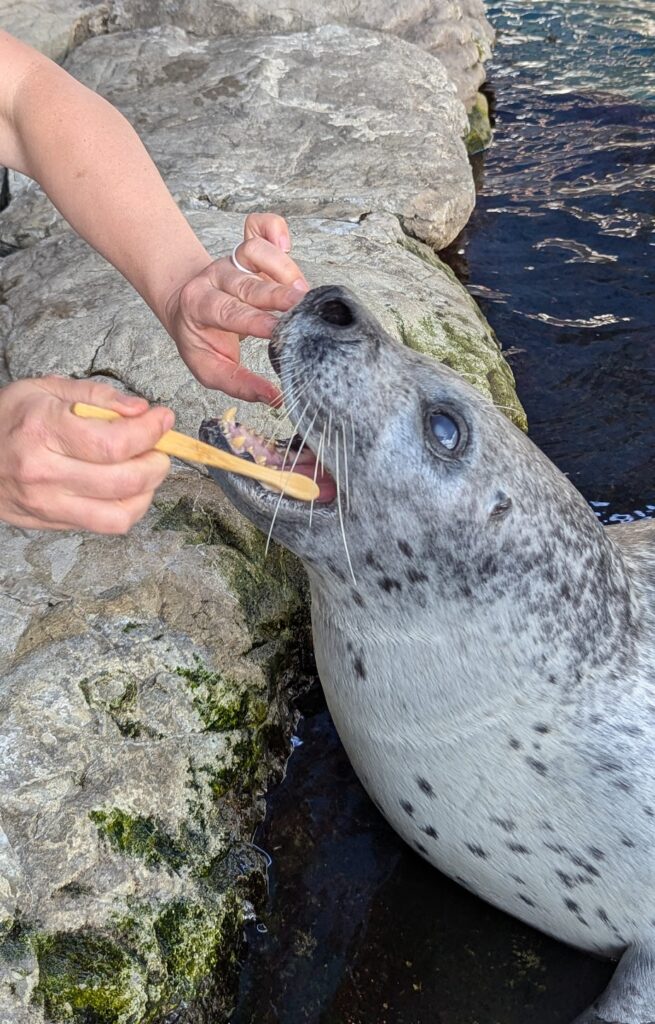
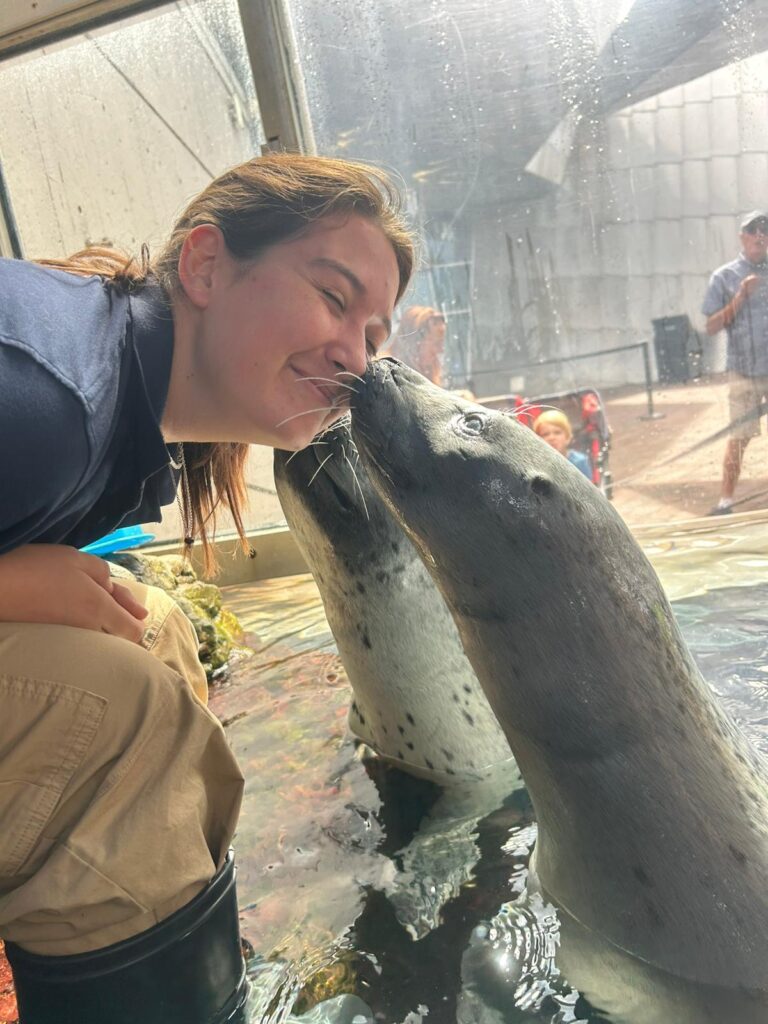
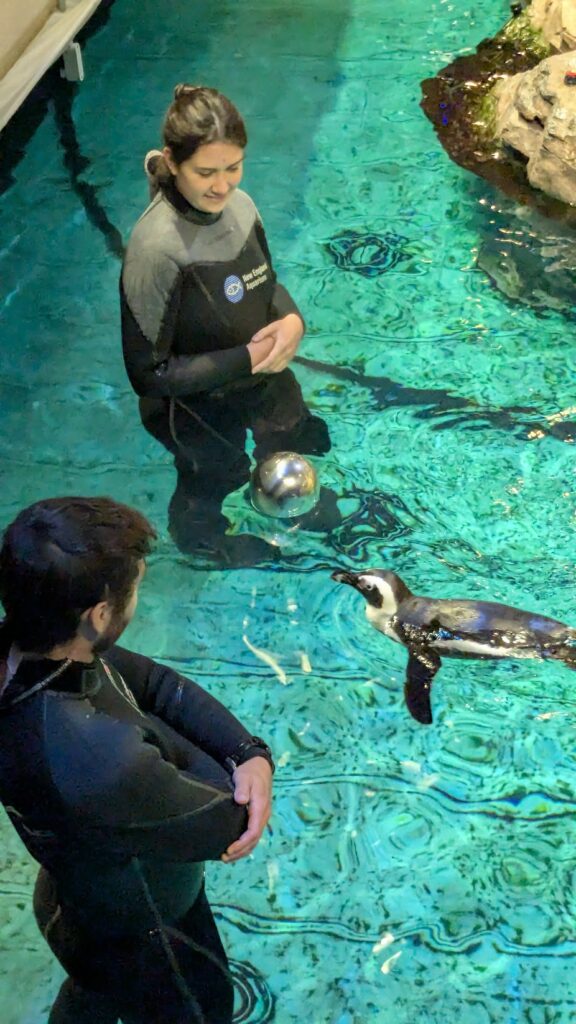
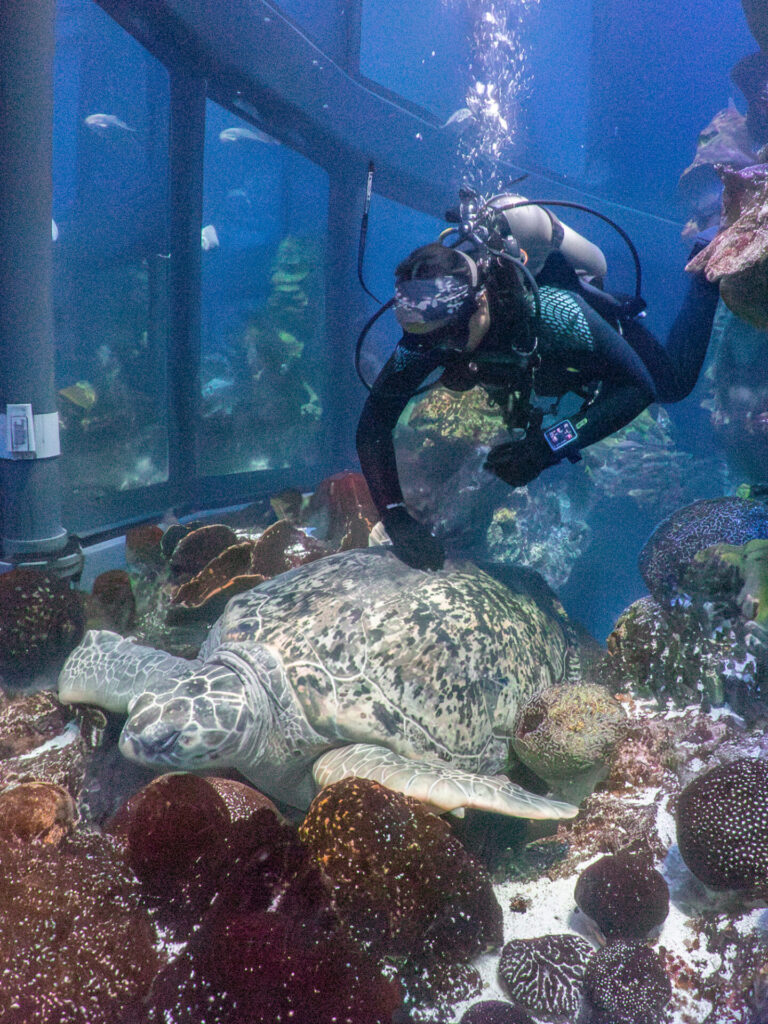

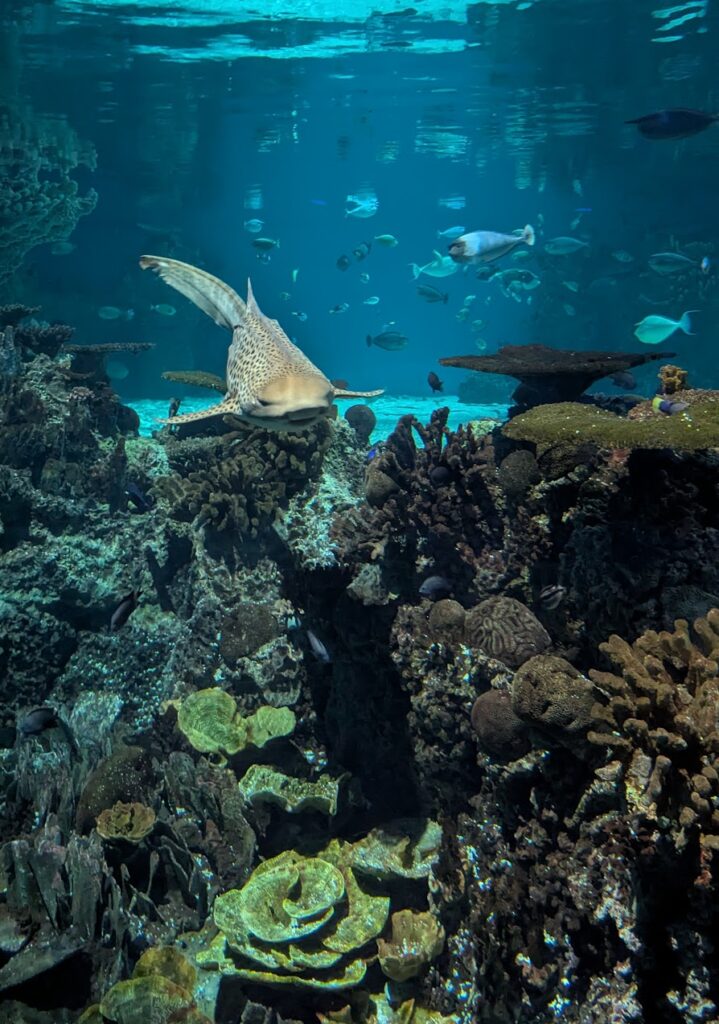
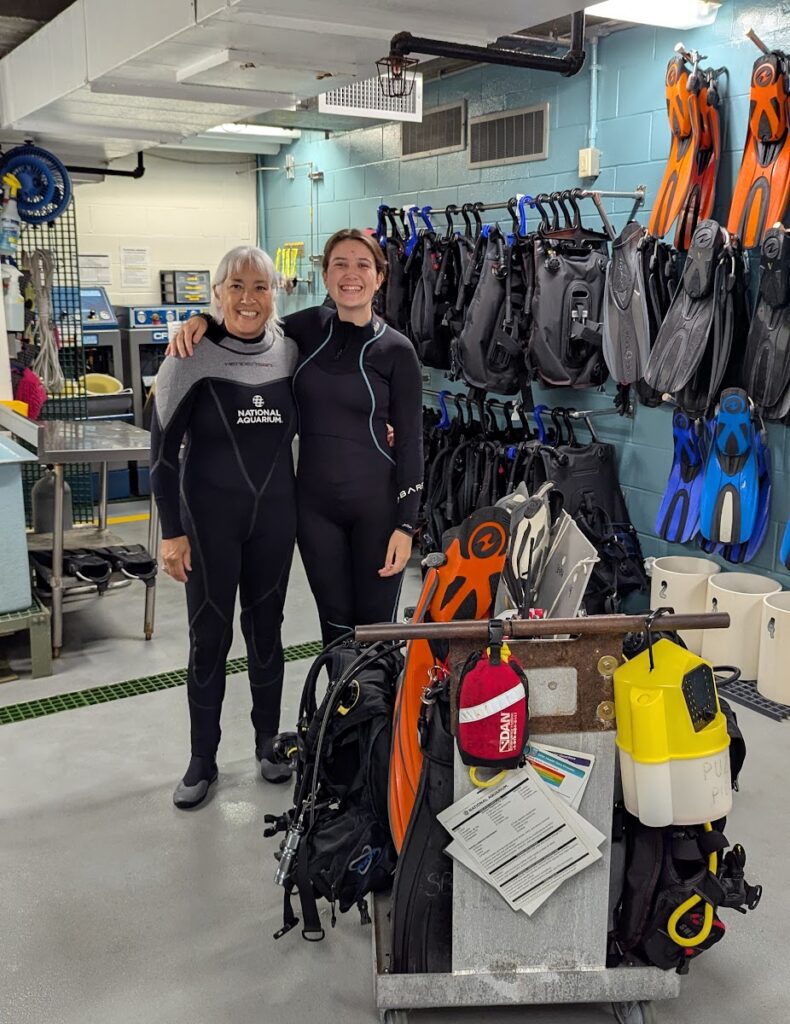
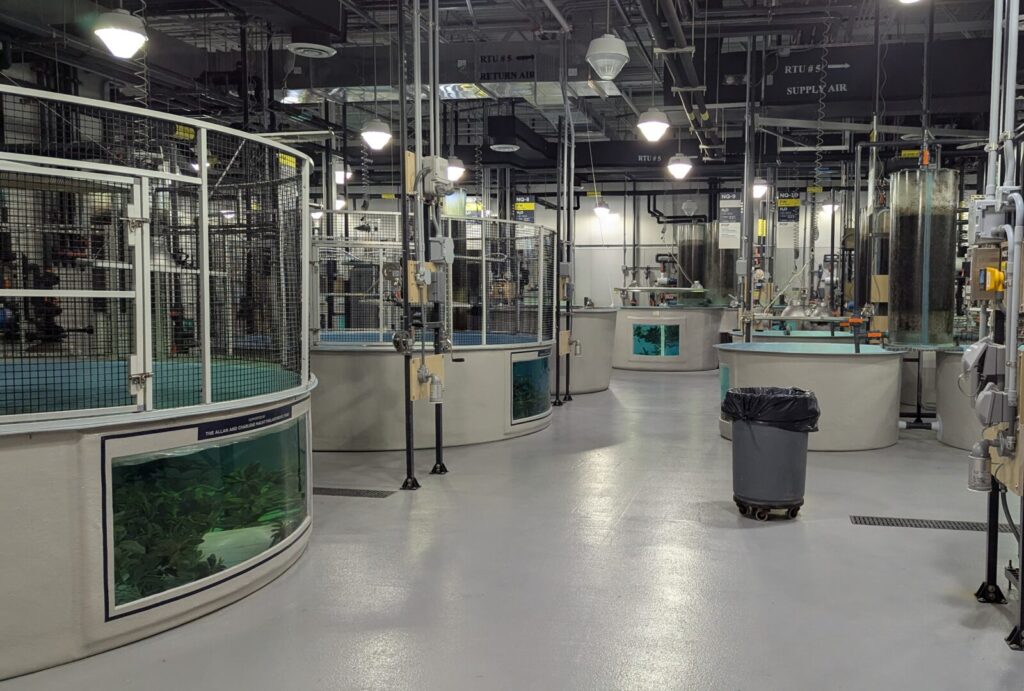
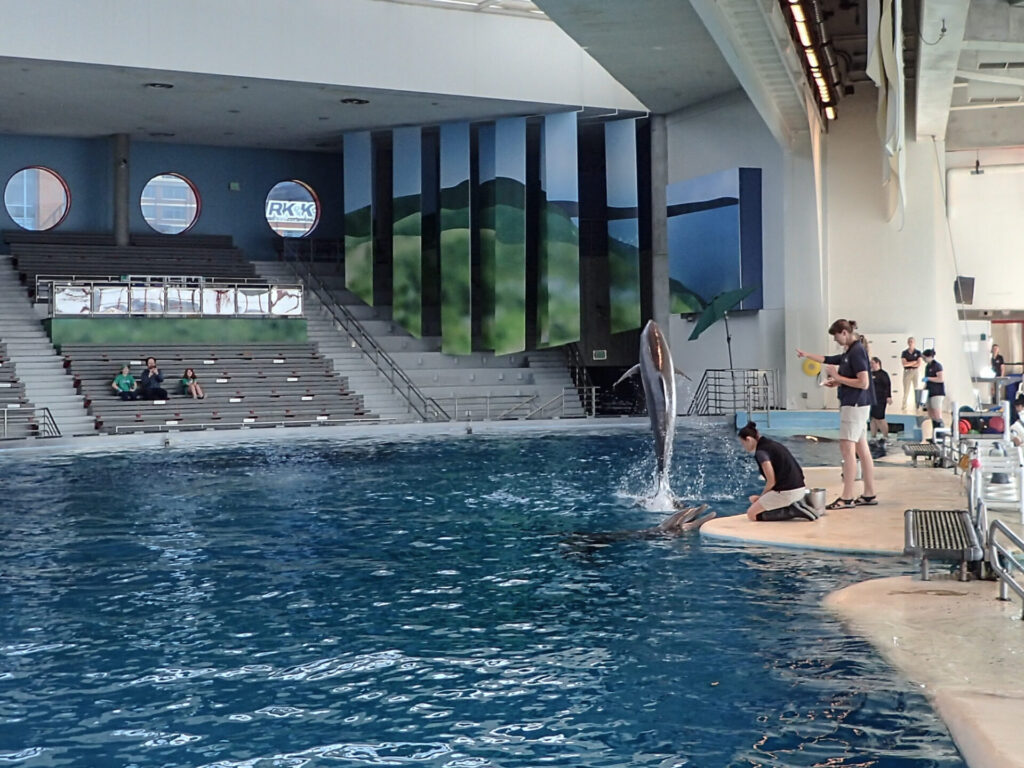
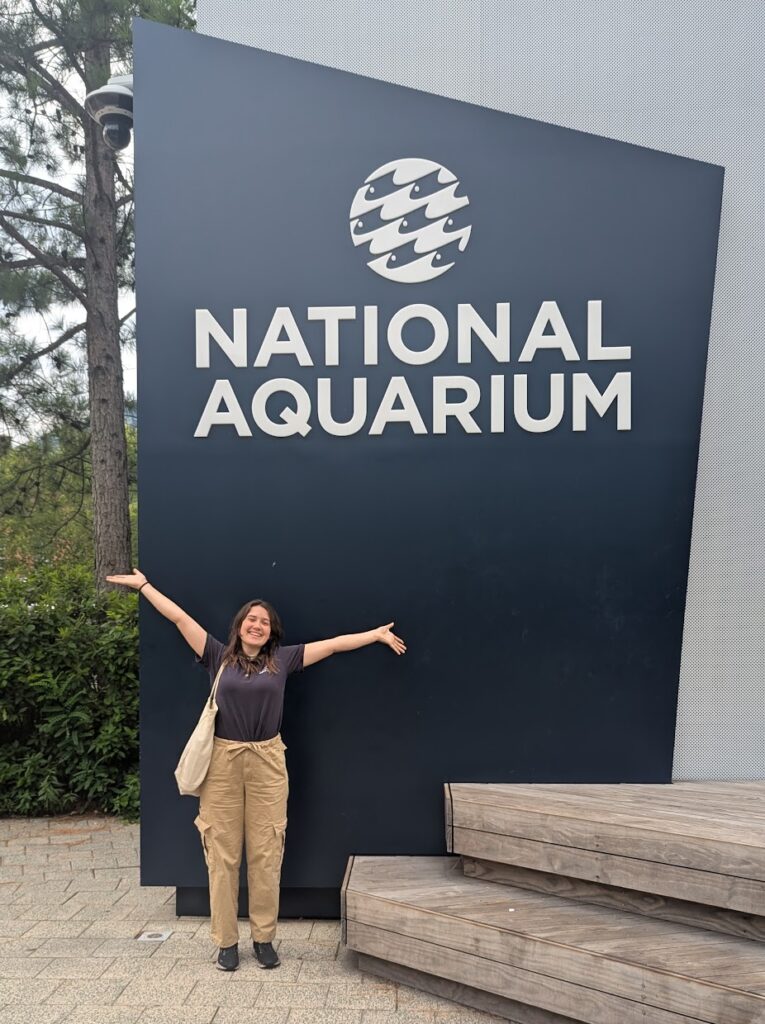
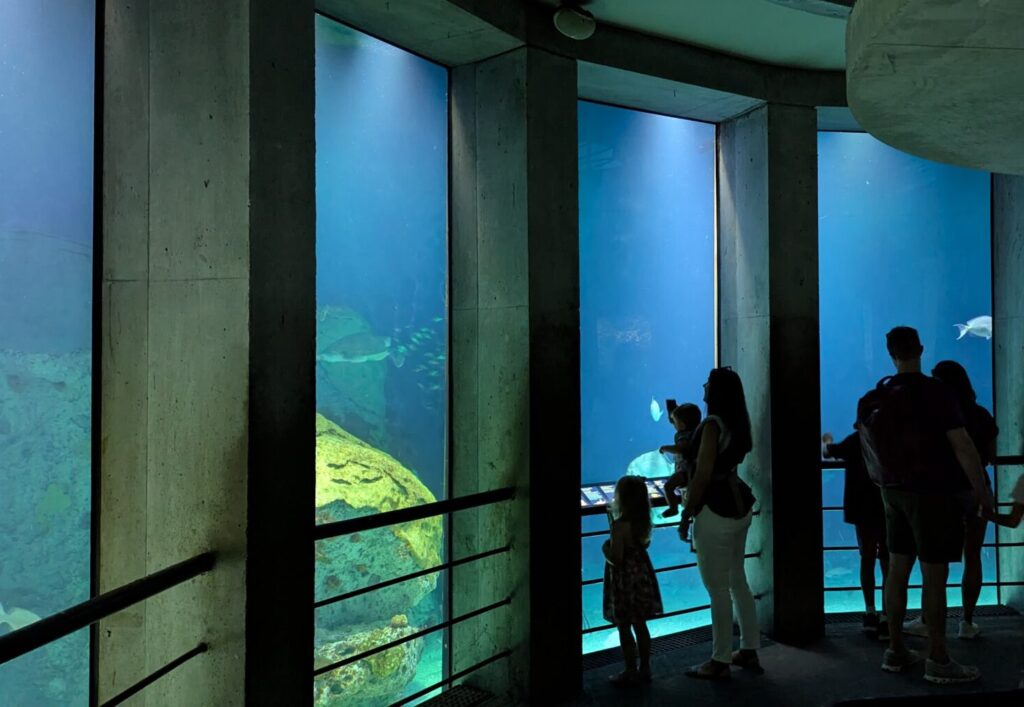
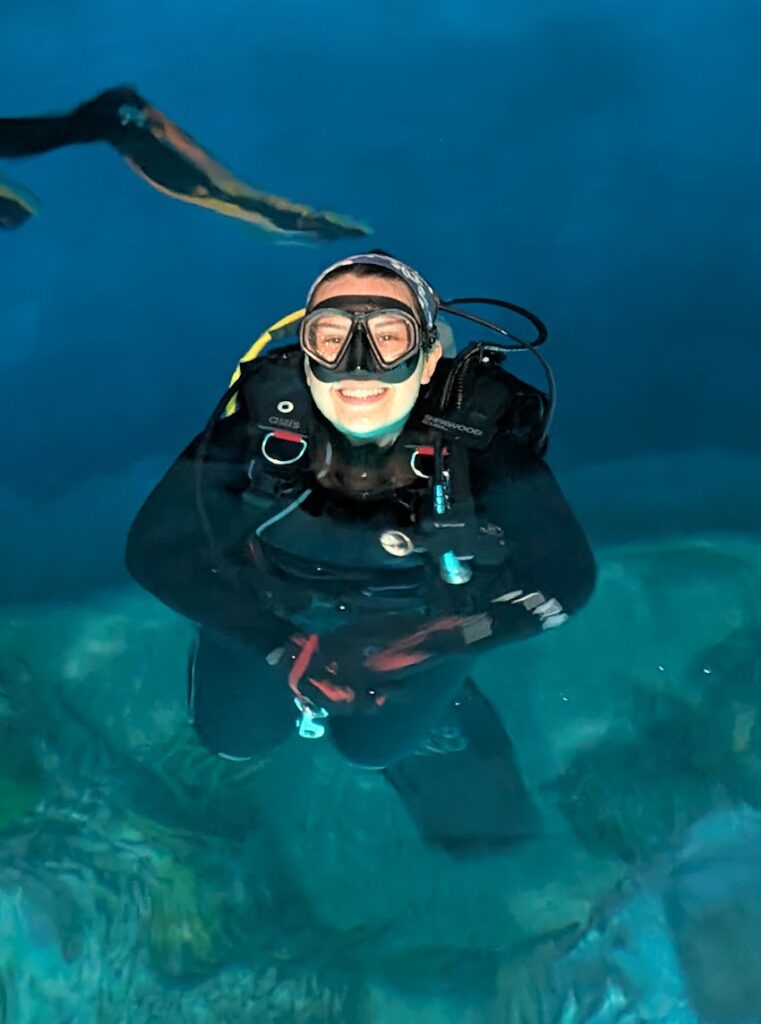 When we got back to the more open area underneath the dive platform, Holly and I planted ourselves on the bottom to check off some basic skills and a peg-board task. Once I finished with that, we had time to explore more of the ACR! We passed one of the green moray eels tucked into the coral, and met the other one in a small passage underneath another coral structure. The huge tarpon swam laps around the ACR and Odie the sea turtle came and checked us out as we finished our dive. What a way to start my time in Baltimore!
When we got back to the more open area underneath the dive platform, Holly and I planted ourselves on the bottom to check off some basic skills and a peg-board task. Once I finished with that, we had time to explore more of the ACR! We passed one of the green moray eels tucked into the coral, and met the other one in a small passage underneath another coral structure. The huge tarpon swam laps around the ACR and Odie the sea turtle came and checked us out as we finished our dive. What a way to start my time in Baltimore!